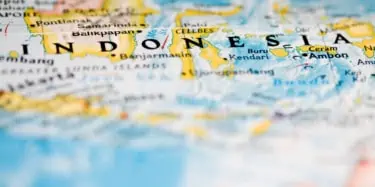Coffee Review readers appear to have good taste in espressos. Of the fifteen espressos tested for this review, all were nominated by Coffee Review readers. Of those fifteen, seven achieved scores of 90 or over, and two more hovered in the 88/89 range. This success rate is considerably higher than typically achieved when I simply collect samples based on roaster nominations plus a random sweep
Aromatic Neighbors: Current Crop Panamas and Costa Ricas
If Costa Rica is one of the world's best-known coffee origins, Panama may be one of the more obscure. Nevertheless, these two coffee neighbors share a border, and the growing region for fine Panama coffee is centered only twenty miles or so from the Costa Rica border on the slopes of Volcan Baru. Both origins are respected for quality, although neither is known for a particularly distinctive cup,
Watch It, Seattle: Chicago-Area Coffees
Two aspects of this month's cupping of Chicago-area specialty coffees surprised: First, the relative small number of specialty coffee roasters we found serving a region so large and sophisticated; and second, the high quality of the coffees this small number of roasters produced. A colleague took a quick run through a couple of Chicago-area supermarkets and turned up almost no Chicago-area
Win Some, Lose Some: Decaffeinated Coffees
I think it's safe to say coffee professionals and their fellow fanatics are not fond of decaffeinated coffees. Yes, sneers or shoulder-slumping resignation are common around the cupping table when the decafs show up. Nevertheless, some people love coffee but can't handle caffeine, at least not at all hours and times. Look at it this way: This proves that there is more to coffee than caffeine.
The New Health Beverage: Health-Enhanced Coffees
The unusual coffees in this month's cupping are the offspring of two trends. The first is the discovery that coffee has as much right to claim membership in the surprise-it's-good-for-you club as do long-time club members green tea and red wine. The second, converging trend is the popularity of hybrid beverages that combine familiar ingredients with substances ranging from vitamins to medicinal
Soft and Sweet: Brazil Specialty Coffees
Brazil is a coffee country in transition. Still the world's largest producer of coffee - but now the world's second largest consumer of coffee as well. Still the home of vast patios filled with coffee fruit carelessly stripped from trees and often mildewing as it dries, but also an emerging producer of some of the world's most fastidiously prepared specialty coffees. Brazil still produces a
Progressive Crema: Organic and Fair-Trade Espresso Blends
Here are three things you need to understand to fully appreciate the achievement embodied in the exceptional espresso blends reviewed this month: First, the espresso brewing system produces its best results from coffees that are balanced but complex. Typically, it takes a minimum of three different coffees, often as many as five, to produce an espresso blend that is both complete enough and
Fruit and Flowers: Coffees of Central and Southern Africa
The eastern half of the African continent produces some of the world's most dazzlingly distinctive coffees, distinctive meaning identifiably different in flavor from the rest of the world's production. However, most aficionados' African experience is limited to coffees from the continent's two most celebrated origins, Kenya and Ethiopia, both in East Africa. What about the eight or ten other
Now More Than Ever: Traditional Coffees of Sumatra and Sulawesi
It may seem a bit ghoulish to carry on about the pleasures of Sumatra coffee when communities not very far from the Sumatra growing regions are suffering through a catastrophe of unimaginably horrific proportions. However, as stark as the contrast may be between a coffee cup and news footage of upended cars, shattered houses and body bags, appreciating Sumatra coffee can only help Sumatrans. The
Top Twelve Coffees of 2004
Here are twelve of the most exciting coffees that we reviewed over the past year. Perhaps they illustrate a paradox, a version of the old saw about when the going gets tough the tough get tougher. Although green coffee prices generally spent a good part of 2004 exploring all-time lows and growers as a group suffered greatly, more really distinguished coffees showed up in our reviews than every
Savory Partnerships: Relationship Coffees
When putting together samples of relationship coffees for this month's review, it became obvious that "relationship" is as ambiguous a word in the world of coffee as it is in the world of people, where "having a relationship" can mean anything from virtually married to, well, something considerably more casual. What the coffees reviewed here have in common is that their path from tree to shelf
Raising Coffee Consciousness: The Cup of Excellence and Green Coffee Competitions
Competitions in which international juries of coffee buyers and roasters gather to choose the best green coffees from the latest crop from a given country is not an entirely new idea, but in recent years it has taken on a new importance, bolstered by the capacity of the Internet to provide a medium for competitive bidding for the winning coffees from roasters and dealers worldwide. Cup Of
Prize-Winning Central American Coffees from the Cup of Excellence
Competitions aimed at finding and rewarding the best green coffees from a given country and crop have proven to be one of the great success stories in the recent history of coffee. The farmers whose coffees prevail in these juried competitions receive recognition and significantly higher prices, while aficionado consumers are rewarded with access to refined lots of exceptional coffees that
Fair Trade Amplifications and Corrections
Our last two review articles (Ethiopia and Kenya: The World's Most Distinctive Coffees, October 2004, and The Fair-Trade Cup: Quality and Controversy, September 2004) contained three inaccuracies in regard to Fair-Trade coffees. In the September Fair-Trade article we wrote that in North America Fair-Trade-certified coffees are available from only three non-Latin-American origins: Sumatra, the
Ethiopia and Kenya: The World’s Most Distinctive Coffees
It's something of a no-brainer to claim that Kenya and Ethiopia are the world's two most distinctive (in other words, most different-tasting) coffee origins. Most cuppers would find it difficult to confidently identify the country of origin of a high-grown Central American coffee without a little help. ("A little too soft for a Costa Rica & Panama? Or maybe El Salvador ... or that fruit, could
The Fair-Trade Cup: Quality and Controversy
It has been some years now since the Fair Trade movement sprung itself on the specialty coffee world, using a passionate and skillfully managed media campaign to persuade a core of concerned consumers that they ought to pay a bit more for coffees that return more money directly to the small-holding farmers who grow the coffee. The timing couldn't have been more appropriate, because about the
Nicaragua: Sweet, Round and Progressive
Nicaragua is simultaneously a rising star of Central American coffee and a poster child for what's gone wrong with coffee generally over the past few years -- the enormous suffering and social dislocation caused by the recent drop in green coffee prices. I suspect these entwined roles as emerging success story and prominent victim both are owing to the early and persistent attention Nicaragua has
Daddy’s Socks or Fancy Cheese: Monsooned Coffees and the Perils of Evaluation
Some foods and beverages that are greatly valued by culture do not respond to the simpler expectations of gustatory pleasure. They offer quirky, ambiguous sensory experiences that typically appeal to those in the middle to late years of life. I still recall the moment, sometime in my early twenties, when I suddenly realized I enjoyed eating major quantities of a particularly fragrant soft-ripened
Mysores and Monsooned Malabars: Coffees of India
People are often surprised India produces any coffee at all, much less fine coffee, given the country's indelible association with tea. In fact, India is a long-time coffee producer, and a very substantial one (sixth in the world in 2002). Furthermore, Indians drink a lot of coffee, particularly in the south of India, where most Indian coffee is grown. And in the more affluent areas of urban
Boutique Espressos
In the 60s we used to talk about instant karma, meaning one minute you're criticizing someone's taste in bellbottoms and the next you're walking into the adjoining room and finding someone else knocking your flower-print shirt. My current episode of foot-in-the-mouth karma took a month, not quite instant, but definitely a quick turnaround from a karmic perspective. Last issue I noted a trend




























